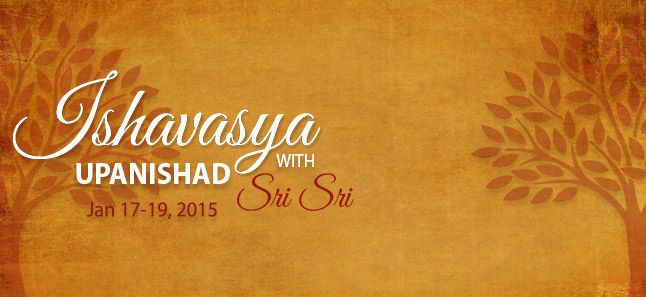Ishavasya Upanishad Discourse by Sri Sri
The manifest world that we perceive, or our experience, is the tip of the iceberg. All that we experience through the senses is a small part of the universe. Most is unmanifest. That is full. To understand, we must have an experience of what That is. That is what Ishavasya Upanishad is about.
What is Upanishad?
In Sanskrit, Upanishad means sitting close – sitting close to the Master, not just physically, but also mentally. It signifies the finite getting close to the infinite, the known reaching out to the unknown. The Upanishads are dialogues between the Master and student from ages ago. There are nearly 100 Upanishads available today out of which eleven are very important. The Master is the embodiment of wisdom and the student represents a spiritual seeker eager to come closer to wisdom.
There are so many levels of conflict in the universe. Despite these conflicts how does one get mentally close? First, we invoke peace. One can only come mentally close when there is peace. Where there is mistrust and doubt, there can be no transfer or exchange of knowledge. Thus, all of the Upanishads begin with a prayer for three types of peace: - “Om Shanti, Shanti, Shanti” (Shanti is a sanskrit word meaning peace.)
“Let us have peace at the physical level, at the level of thoughts and emotions, and finally the innermost peace of the soul. Let the Divine protect us both and bestow wisdom upon us. Let us not hate one another, but let us come together in peace.”
To attend the Ishavasya Upanishad Discourse you can attend either the Part II Program (5 & 7 days) or the Blessings Program.
Special Program including the Ishavasya Upanishad Discourse:
Part II (Art of Silence)
17-21 Jan - 5 Day Part II
15-21 Jan - 7 Day Part II
Blessings Program: 17-20 Jan
You can also join us for the Ishavasya Upanishad Discourse from where ever you are via webcast.
